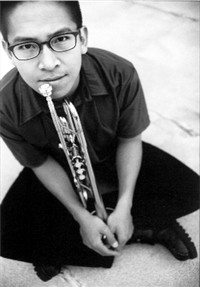
Among my collection of articles musing on the death or waning days of jazz, my favorite (so far) appeared in the spring 1997 issue of the Wilson Quarterly. Embellished with an engraving of Wynton Marsalis's face pasted atop a lace-cuffed frock coat and cocooned in a Mozart wig, the article, “Has Jazz Gone Classical?" hits the usual marks. Author Clive Davis laments the passing of giants (Miles, Dizzy, Ella) and the resurgence of well-worn styles. Citing the absence of an obvious, vital titan or two, Davis wonders, “Who is the new Miles, the new Charlie Parker?"
Perennially, the death, decline, disintegration, disappearance, or however you want to describe it of jazz gets blamed on economics (frozen or sky-high cover charges, depending on whom you talk to), prominent artists (Ornette Coleman, Coltrane, Cecil Taylor, Miles, Kenny G, Wynton... yes, everyone's a suspect), audiences (white, black, young, old, or some lack thereof), or the institutional embrace of jazz by high-school and university music programs.
Too many writers think they know what's going on in jazz. I can unfurl lists of national and regional artists--many of them potential or actual successors to Miles and Parker--yet I don't know nearly as much as I think I know. But I can tell you this: If we define jazz as music invented by African Americans that exalts improvisation, ongoing rhythmic tension, and group dialogue while reserving a prominent place for a soloist to articulate an individual, perhaps contradictory, musical vision, then jazz is in pretty good shape.
Perennially, the death, decline, disintegration, disappearance, or however you want to describe it of jazz gets blamed on economics (frozen or sky-high cover charges, depending on whom you talk to), prominent artists (Ornette Coleman, Coltrane, Cecil Taylor, Miles, Kenny G, Wynton... yes, everyone's a suspect), audiences (white, black, young, old, or some lack thereof), or the institutional embrace of jazz by high-school and university music programs.
Too many writers think they know what's going on in jazz. I can unfurl lists of national and regional artists--many of them potential or actual successors to Miles and Parker--yet I don't know nearly as much as I think I know. But I can tell you this: If we define jazz as music invented by African Americans that exalts improvisation, ongoing rhythmic tension, and group dialogue while reserving a prominent place for a soloist to articulate an individual, perhaps contradictory, musical vision, then jazz is in pretty good shape.






















